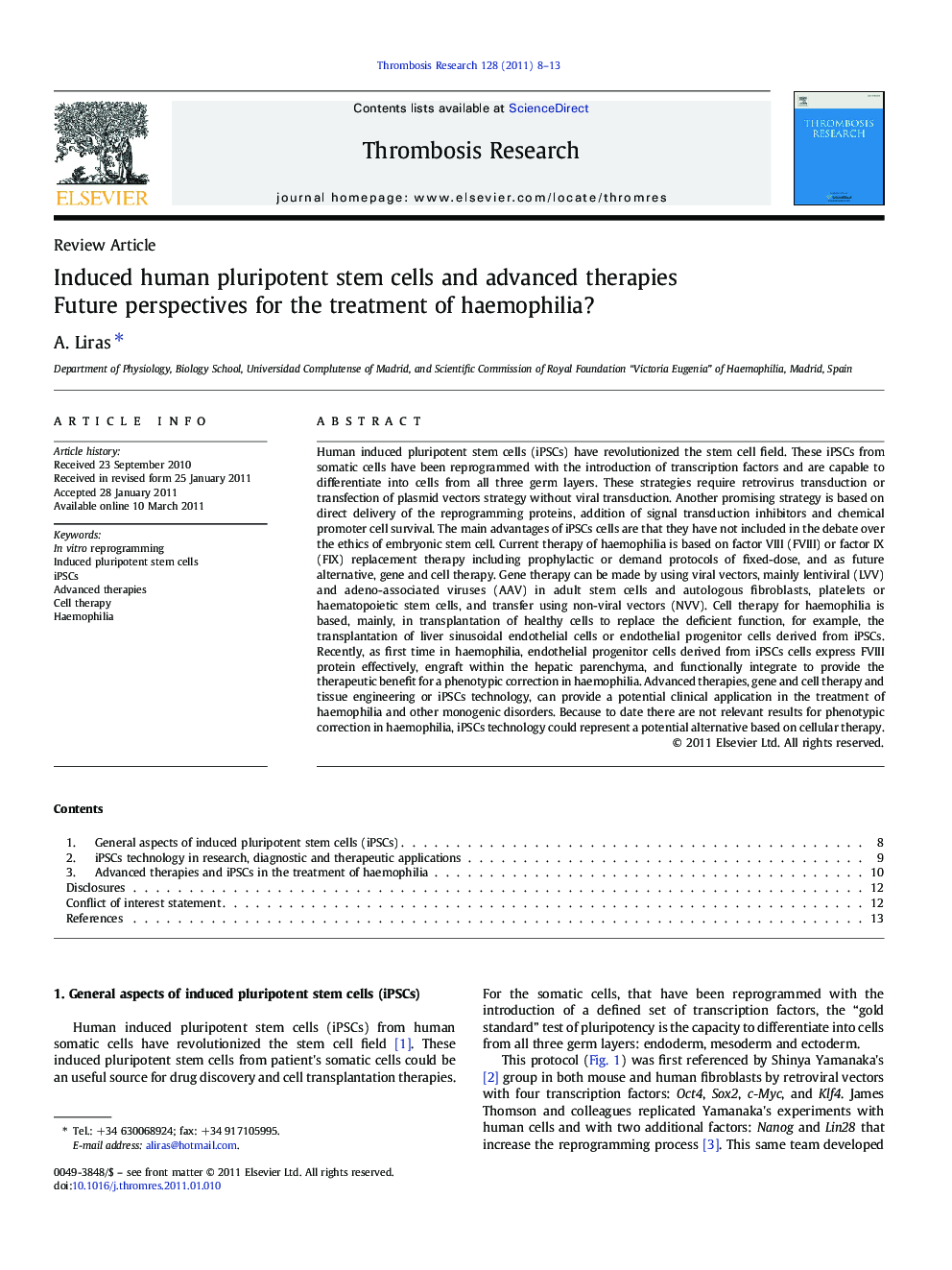| Article ID | Journal | Published Year | Pages | File Type |
|---|---|---|---|---|
| 6003594 | Thrombosis Research | 2011 | 6 Pages |
Human induced pluripotent stem cells (iPSCs) have revolutionized the stem cell field. These iPSCs from somatic cells have been reprogrammed with the introduction of transcription factors and are capable to differentiate into cells from all three germ layers. These strategies require retrovirus transduction or transfection of plasmid vectors strategy without viral transduction. Another promising strategy is based on direct delivery of the reprogramming proteins, addition of signal transduction inhibitors and chemical promoter cell survival. The main advantages of iPSCs cells are that they have not included in the debate over the ethics of embryonic stem cell. Current therapy of haemophilia is based on factor VIII (FVIII) or factor IX (FIX) replacement therapy including prophylactic or demand protocols of fixed-dose, and as future alternative, gene and cell therapy. Gene therapy can be made by using viral vectors, mainly lentiviral (LVV) and adeno-associated viruses (AAV) in adult stem cells and autologous fibroblasts, platelets or haematopoietic stem cells, and transfer using non-viral vectors (NVV). Cell therapy for haemophilia is based, mainly, in transplantation of healthy cells to replace the deficient function, for example, the transplantation of liver sinusoidal endothelial cells or endothelial progenitor cells derived from iPSCs. Recently, as first time in haemophilia, endothelial progenitor cells derived from iPSCs cells express FVIII protein effectively, engraft within the hepatic parenchyma, and functionally integrate to provide the therapeutic benefit for a phenotypic correction in haemophilia. Advanced therapies, gene and cell therapy and tissue engineering or iPSCs technology, can provide a potential clinical application in the treatment of haemophilia and other monogenic disorders. Because to date there are not relevant results for phenotypic correction in haemophilia, iPSCs technology could represent a potential alternative based on cellular therapy.
